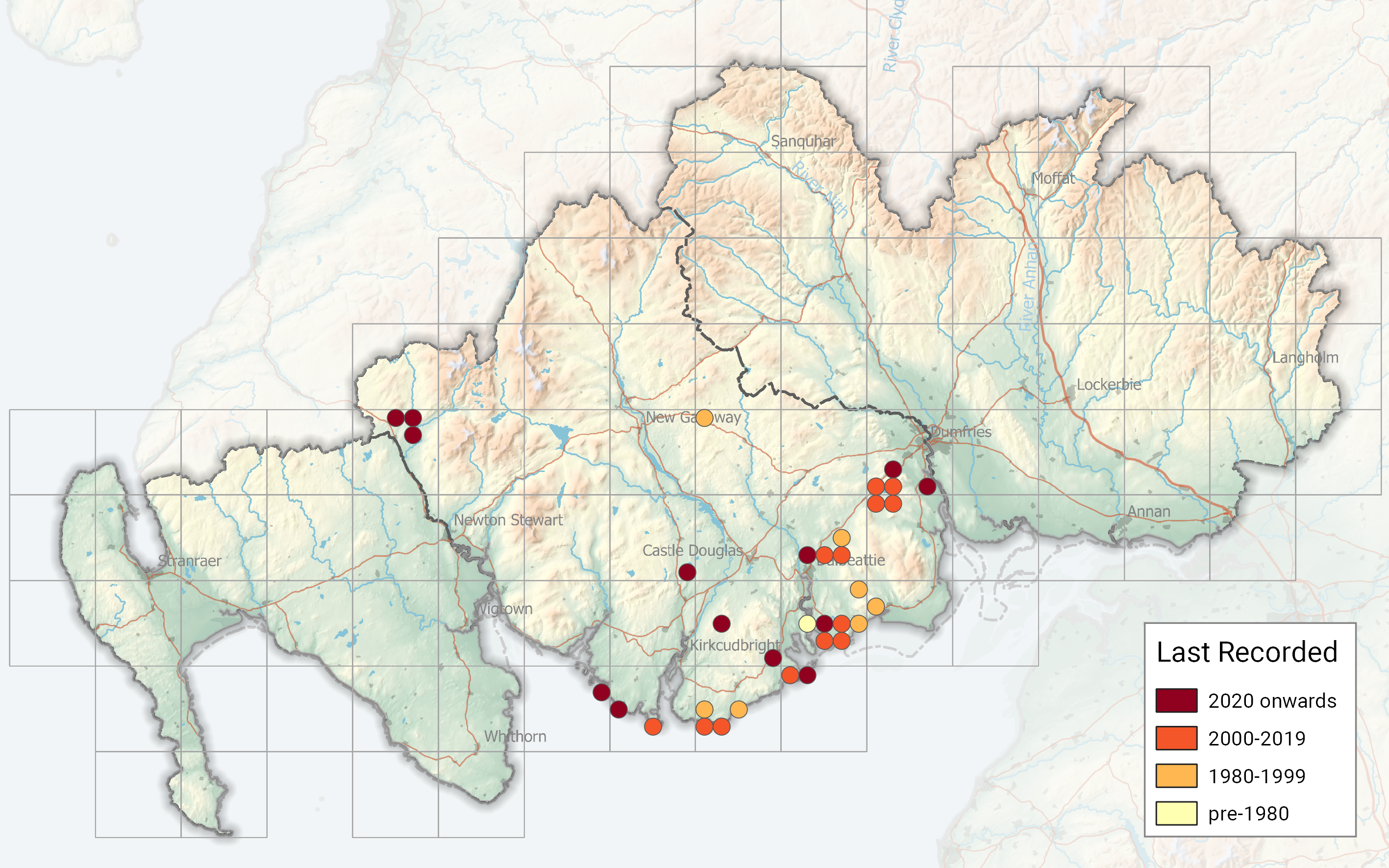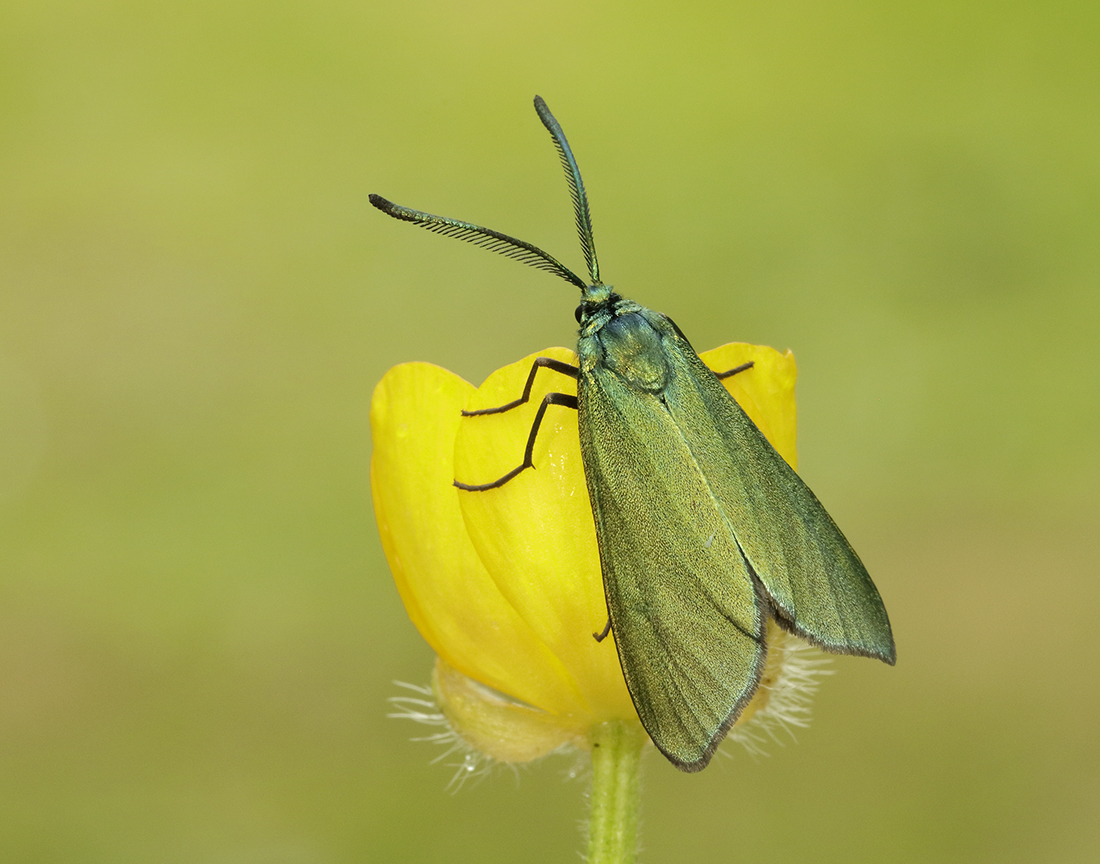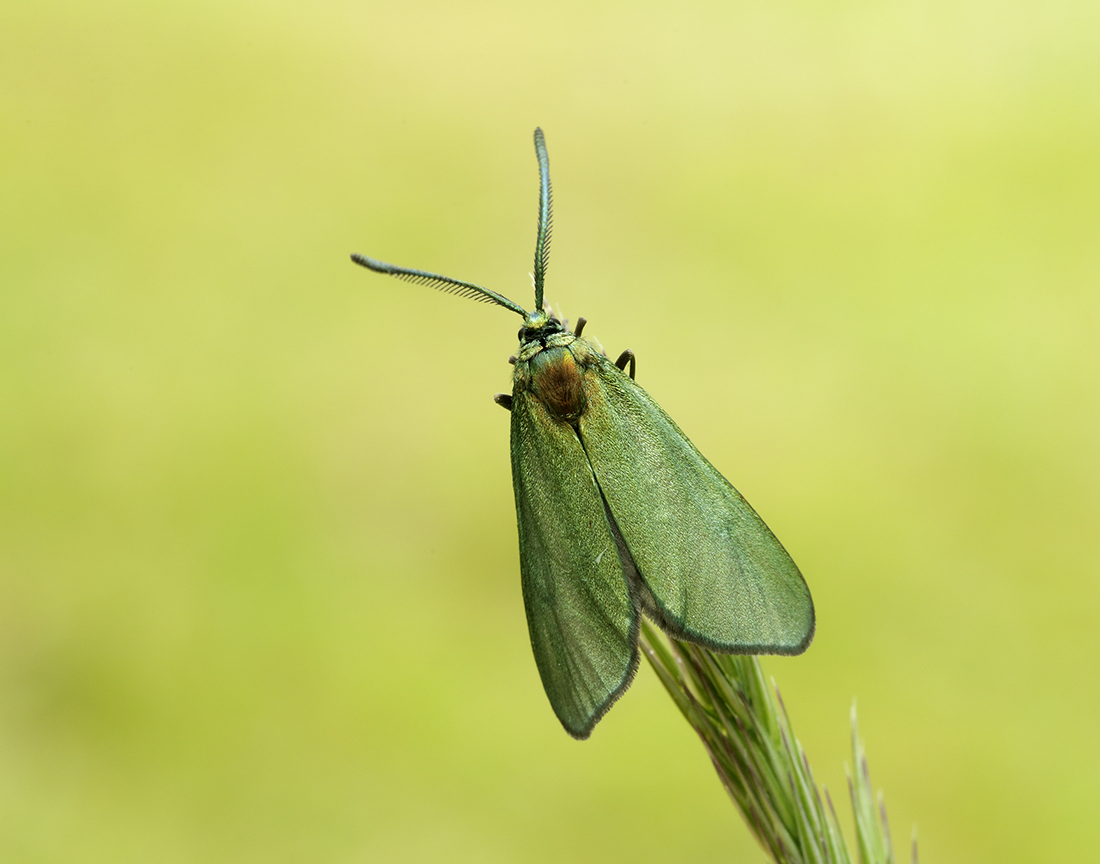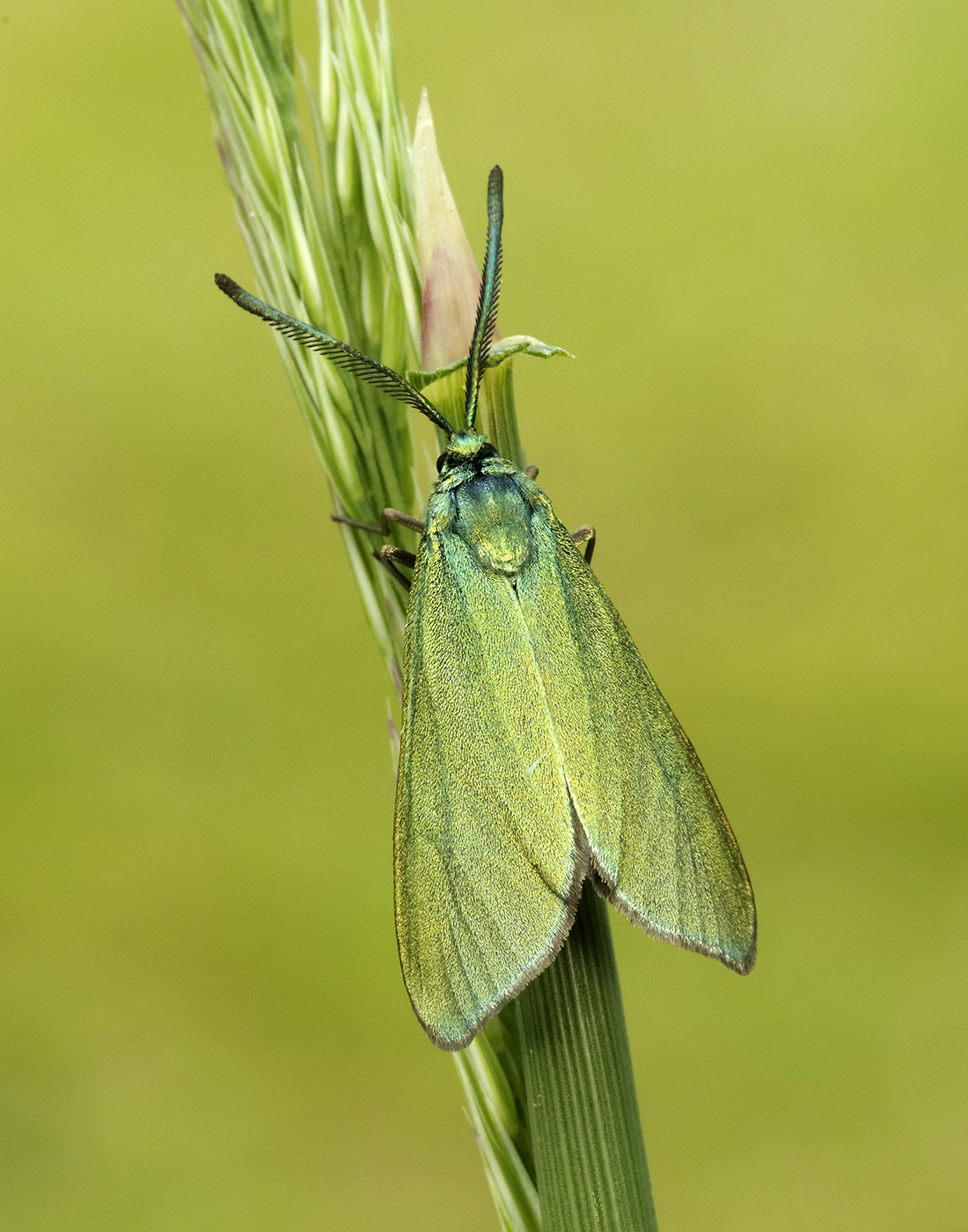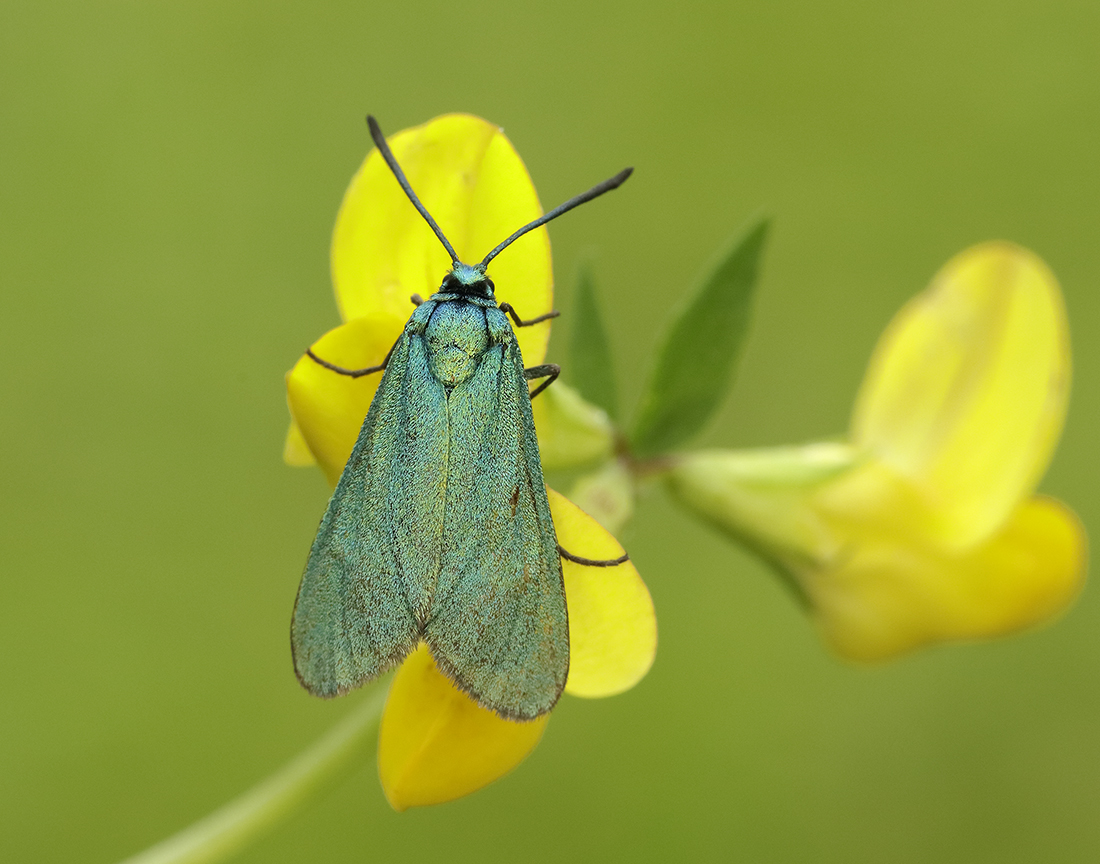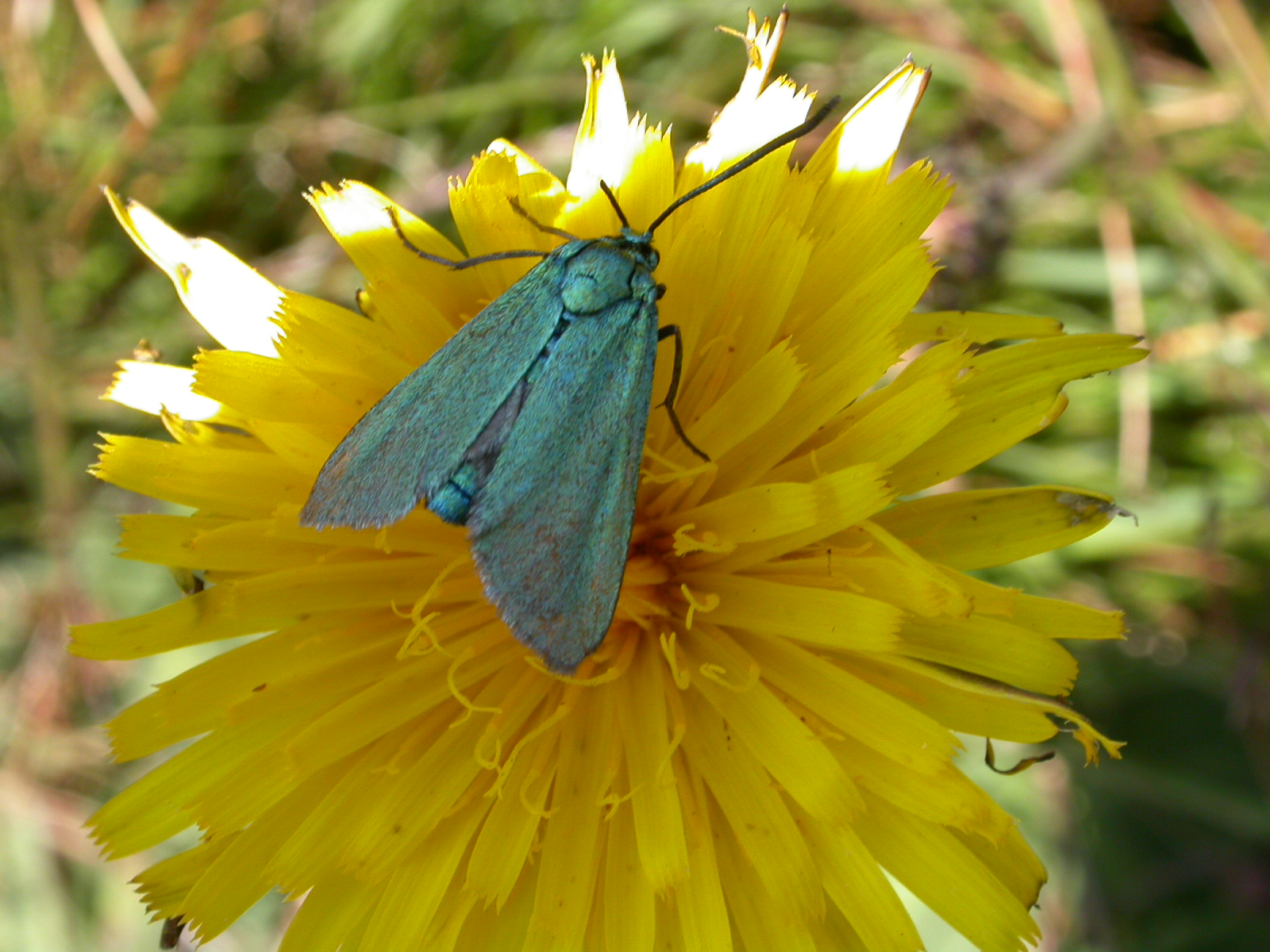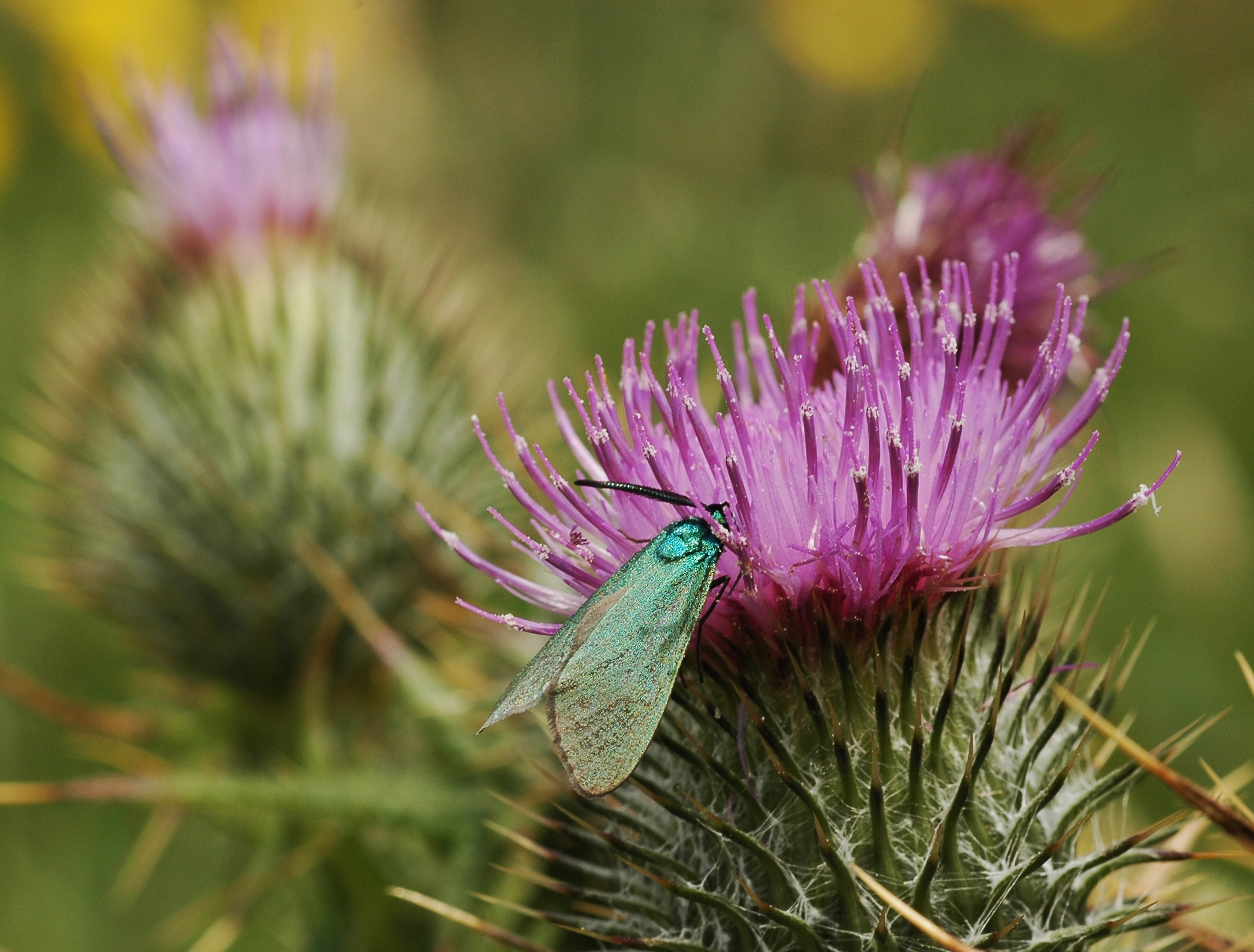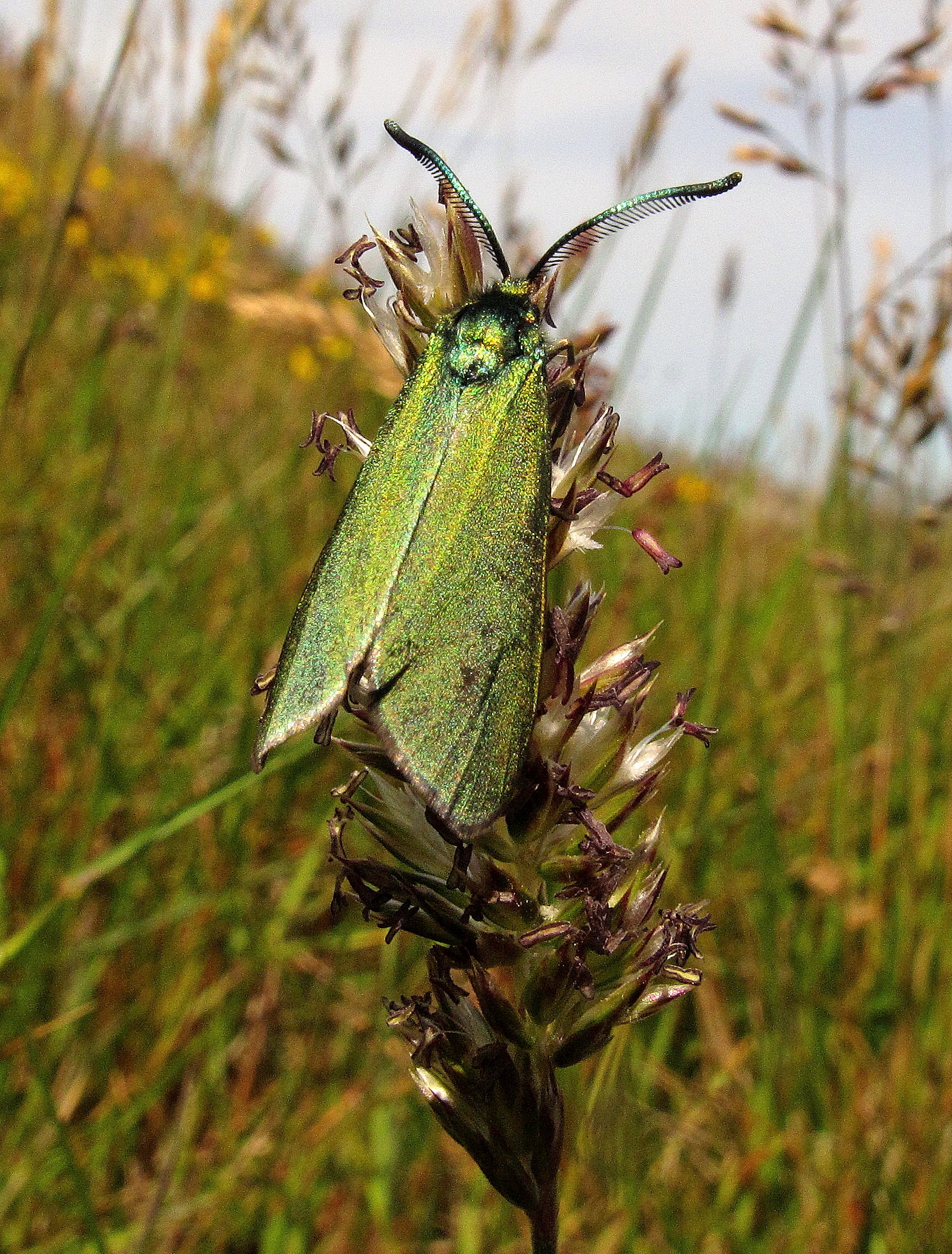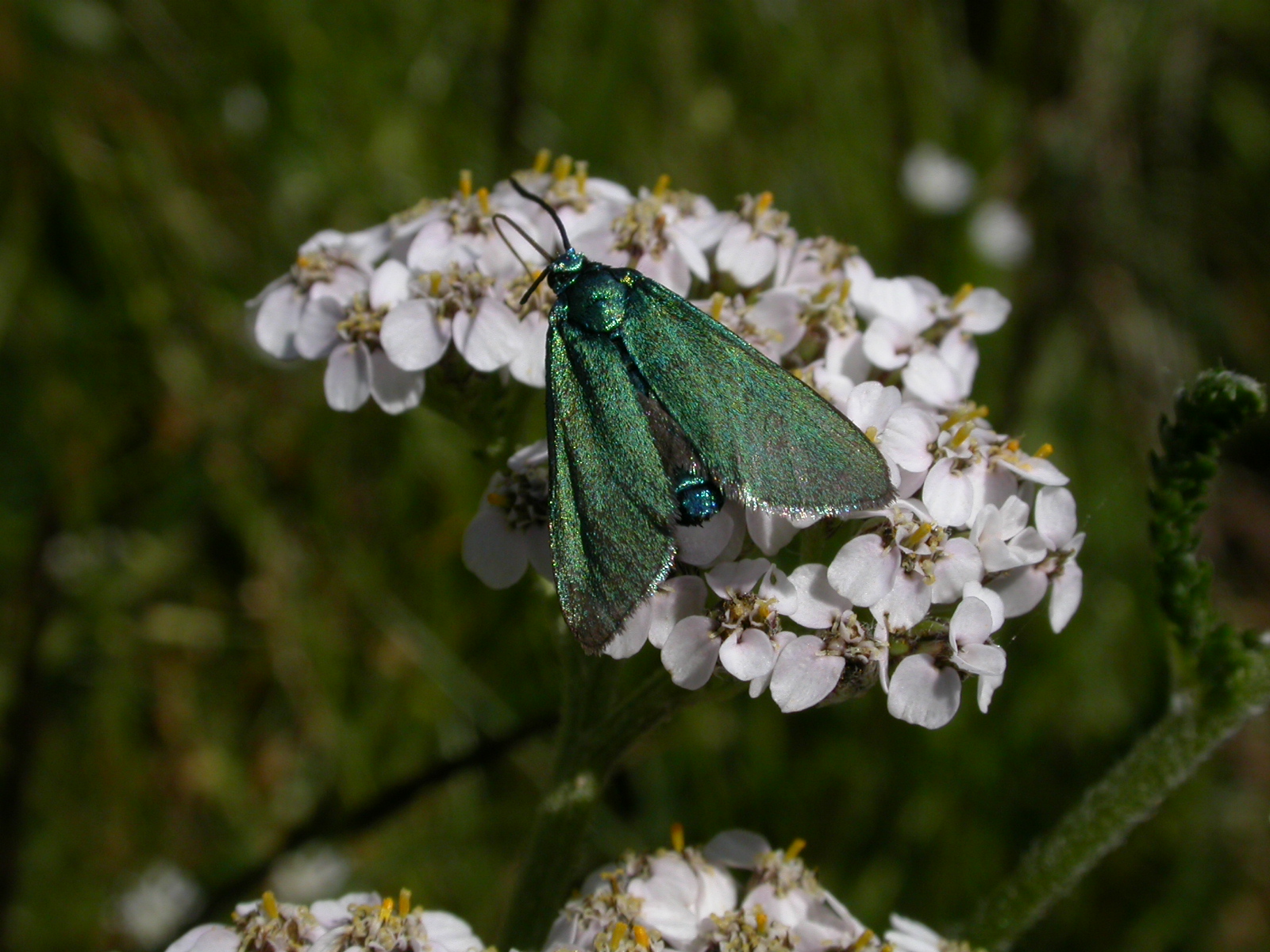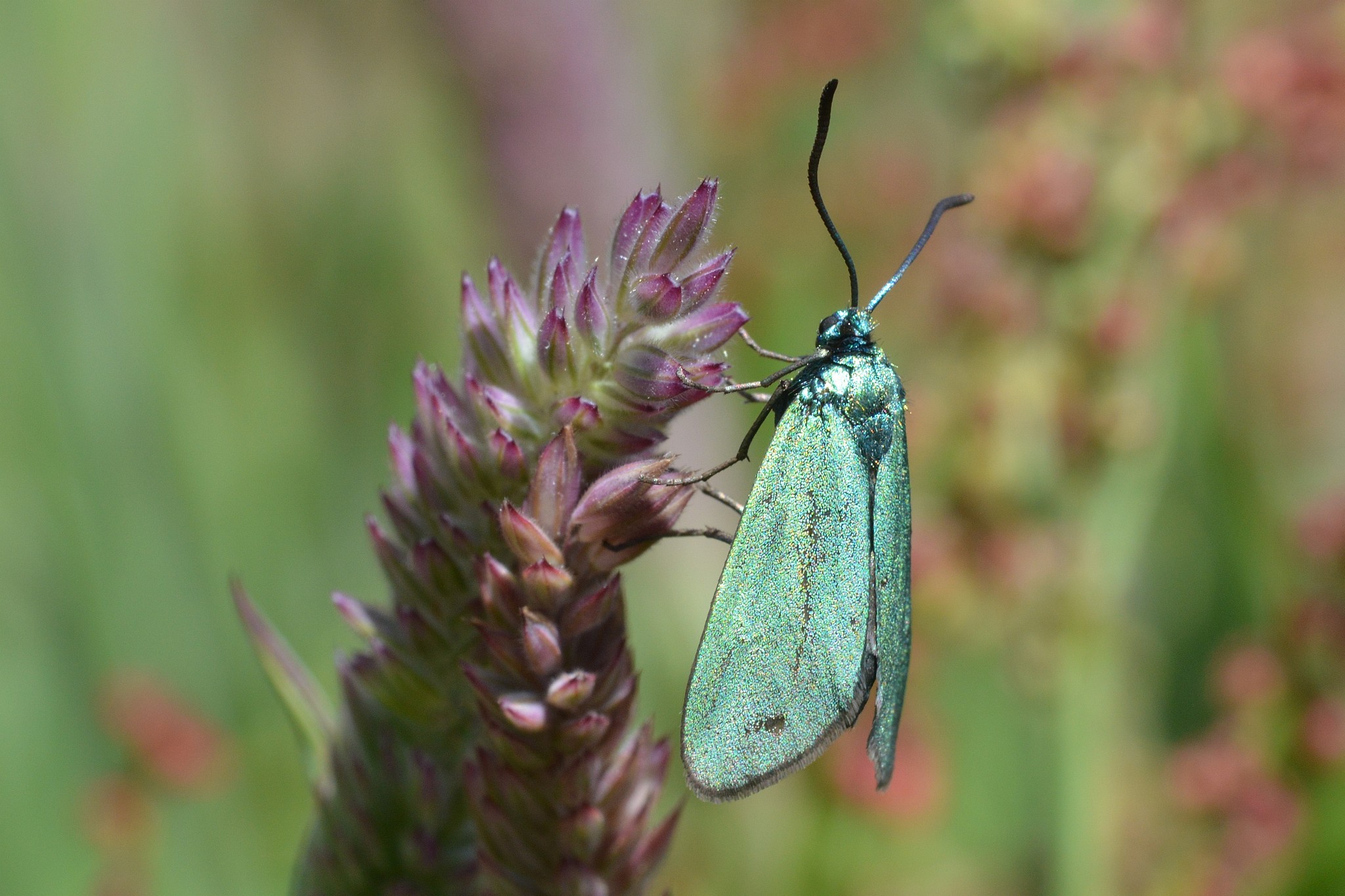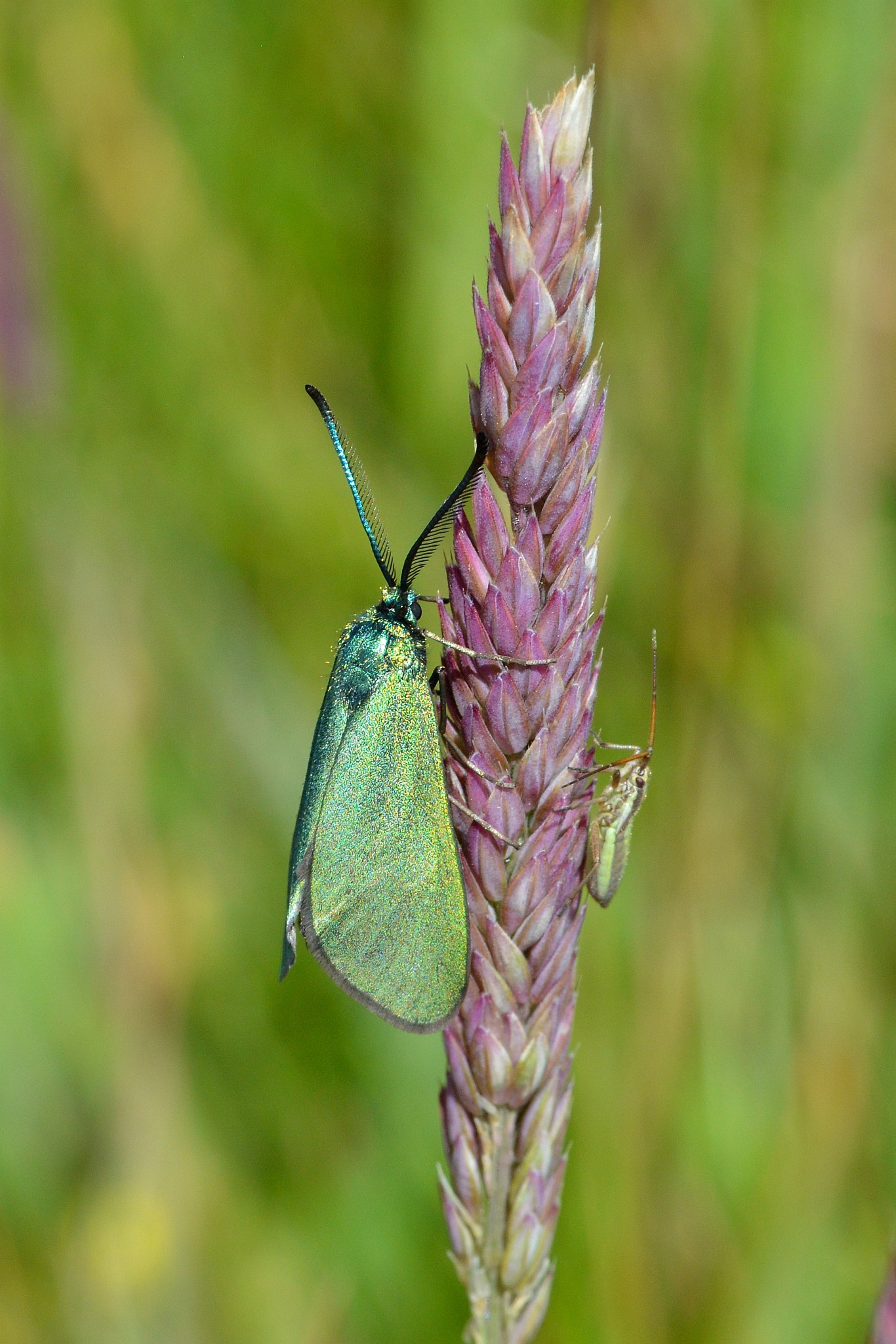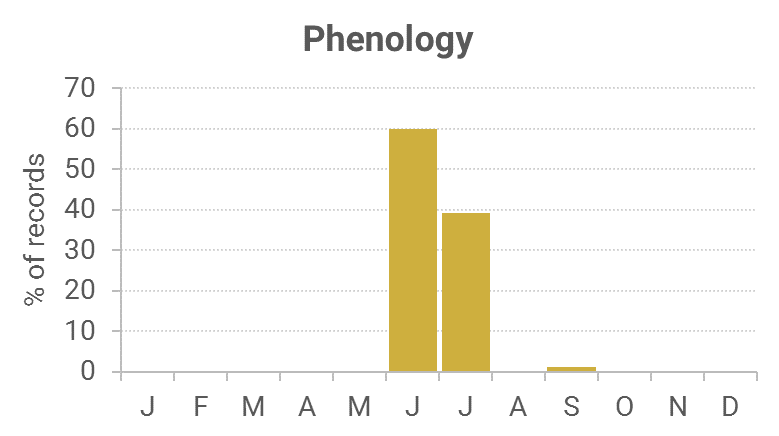See also Moth of the Week (24/06/2021) and (20/06/2020).
Identification
Unmistakable, the only one of the three forester moths recorded in the region.
Recording Method.
A day-flying moth, flying particularly in sunshine. Spends much time feeding on flowers, even in cloudy weather.
Life cycle
One generation. Overwinters as a young larva. Larva July to early May, with pupation close to the ground.
Larval foodplants
Larval foodplant is Common Sorrel and Sheep’s Sorrel.
Habitat
Damp, flower-rich grassland, often on the coast but also inland.
History
The Forester was not recorded in MOGBI for our region, but this very attractive day flying moth was found in small scattered colonies in Kirkcudbrightshire.
Lennon (1863) under Cossus ligniperda was the first to record it as appearing at Dalskairth but he had stated it was not common. However, in his obituary in the Dumfries and Galloway Standard of 3rd January 1900, it stated on page 5 the following: ‘And there was one incident he was never tired of relating to the select few who were interested and could appreciate the picturesqueness of the story – how after a long day’s hunting in the sunshine he came towards evening across a rushy field at Dalskairth. Over a space of several acres every leaf and every blade of grass was literally hanging with untold myriads of the beautiful “Green Forester” moths. His boxes were filled and his pins exhausted, but he managed to find room for a dozen or two of this usually extremely scarce species and he left for home, buoyed up with the idea that next morning he would have a haul beyond anything he had ever imagined. Next day he was promptly on the spot, but to his intense wonder and disappointment several hours of the most unremitting search only produced a single worn example of the moth that had been on the ground the previous evening in countless thousands. Whence came they and where did they go?’
The next record was in 1941 at Kippford, followed by two records by Cunningham (1949-50) in June 1949 and 1950 from Mabie Forest.
Four more records in the 1980s were followed by a further 38 records in the 1990s but only 16 for the first nine years of the 21st century.

